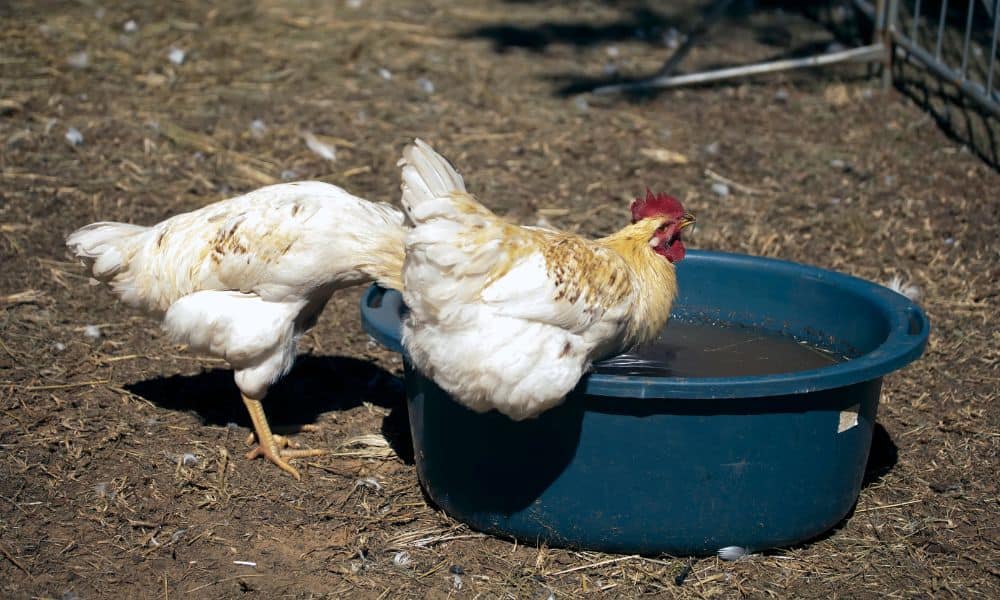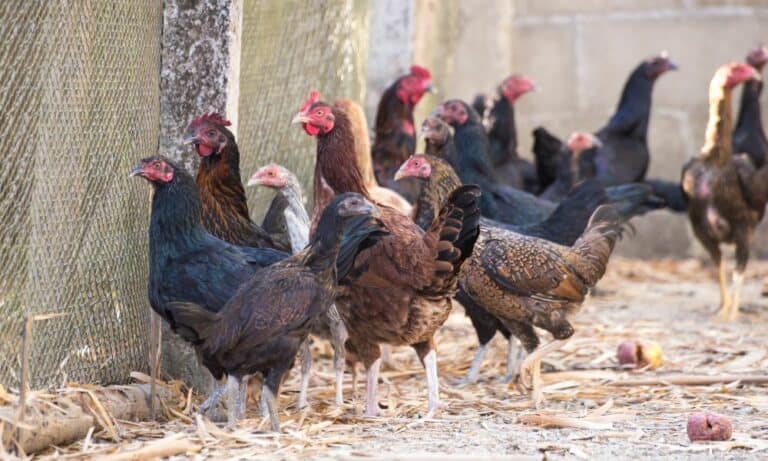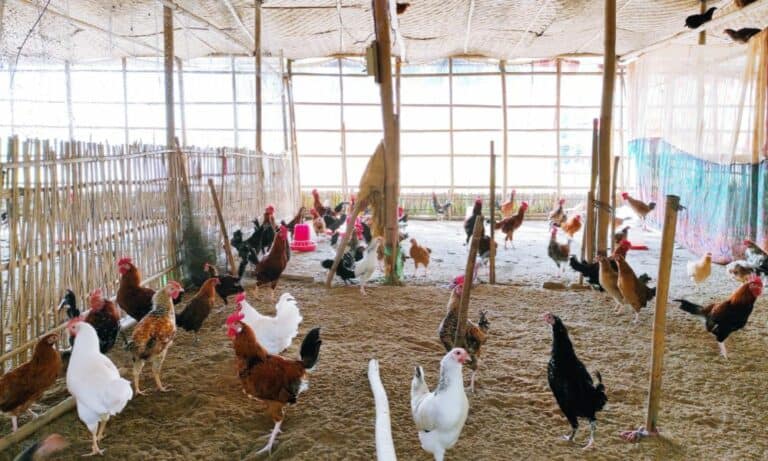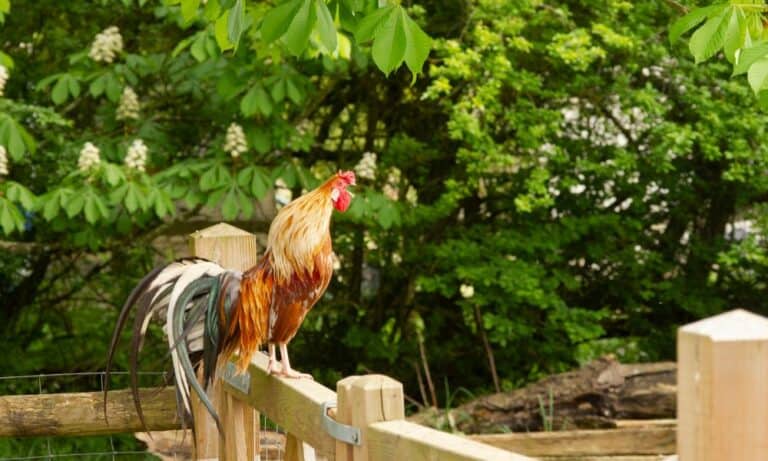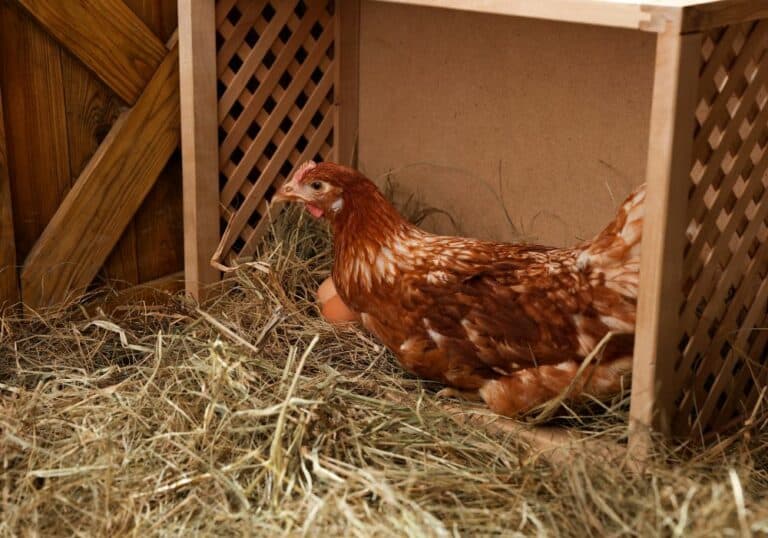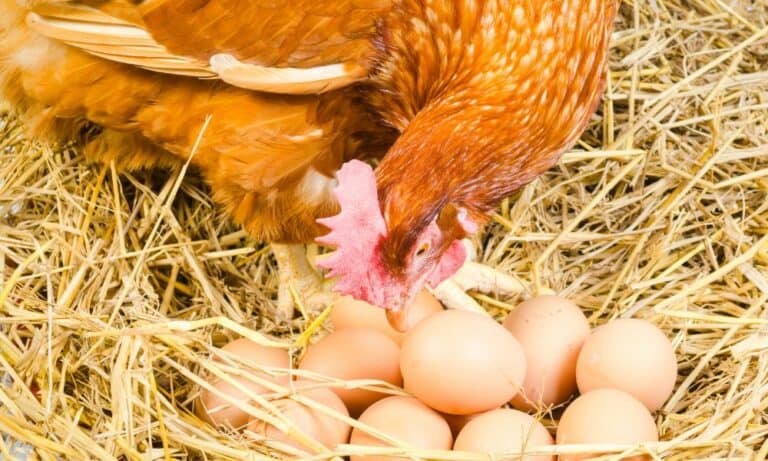One of the crucial issues you need to solve in the coop is how to keep chicken water from freezing during the winter. Even though poultry needs less liquid in the cold season than during the summer, they still need it clear, fresh, and thawed.
The situation is even worse outside when the temperatures are exceptionally low. You can provide enough water for your flock and prevent severe dehydration only when keeping drinking water unfrozen. Let’s check your best options.
Keep Chicken Water Outside the Coop
The rule of thumb is to keep a bowl with water outside a coop since it makes maintaining more effortless and decreases bacteria growth inside. Otherwise, you can attract rodents and bugs, make a mess, and increase the humidity indoors.
Unfortunately, it can be problematic during the winter when outside temperatures are below the freezing point of water.
Luckily, adult chickens don’t need water and feed overnight, so there is no reason to bring them inside the coop and mix them with litter. You should only pick out the proper method to protect water from freezing during the day.
HARDY COLD METHODS
These methods are appropriate for northern states experiencing severe winter conditions with regular temperatures below freezing.
1. Heated water base
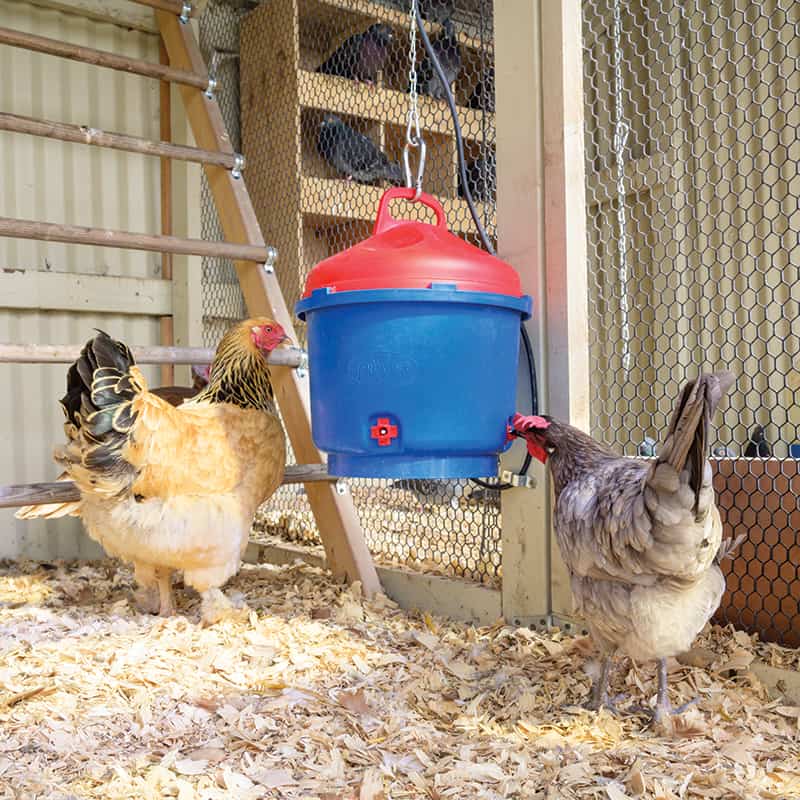
After installing a heated water base and plugging it into an electricity source, it automatically turns on when the temperature drops below freezing. It is necessary to have electricity nearby, and you can use it only with a plastic water system placed on a flat surface.
2. DIY heated water base
This installation is cheaper than a heated water system, and you can make it on your own. It relies on the heat that one lightbulb of 25 to 40 watts placed in a cinder block can produce. Overlap it with the half block and place a bowl with water on top.
3. Heated pet bowls
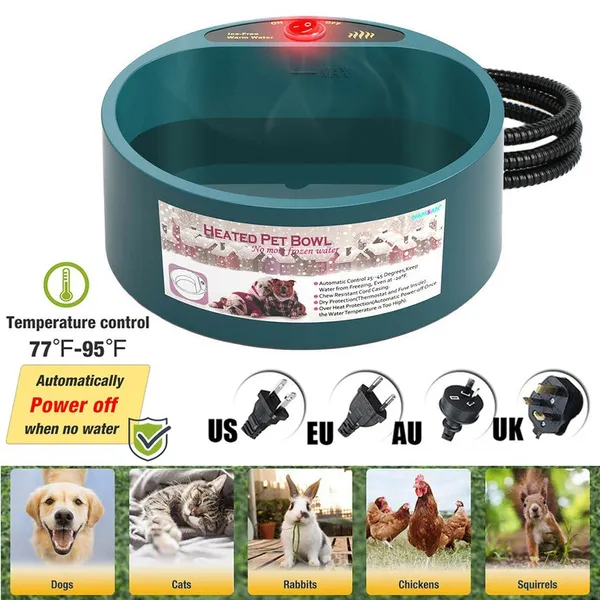
Buy a heated pet bowl and use it for your flock instead an expensive heated water base. It is less efficient but can keep water at an acceptable temperature. The only disadvantage is rapid water soiling, requiring its often change.
4. Non-traditional methods
Livestock tank or birdbath deicer – You can use one of these devices to keep chicken water from freezing. Their primary advantage is their smaller size.
Water filter, fountain, or aerator – Any of these devices prevents quick water freezing by producing constant movement.
Fish tank heater – This tiny device’s primary purpose is to warm water inside an aquarium. It maintains the required temperature for tropical fish, but you can use this property for your needs. Unfortunately, it should continuously be on, using a significant energy amount.
5. Keep water inside the heated coop
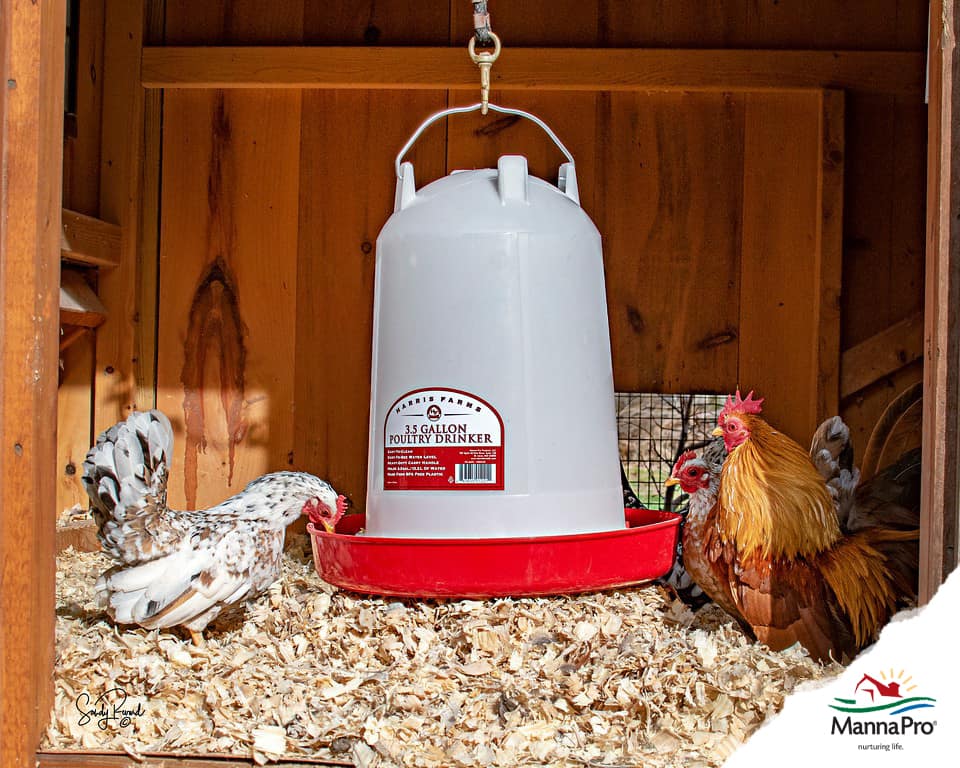
This solution is the worst you can choose. Unfortunately, sometimes it is necessary to place a waterer inside the coop when outside temperatures are too low.
It is practical when warming the coop during the winter, preventing chickens from going outside during freezing days. Since water and food make a mess, you need to clean the coop more regularly to prevent increased bacteria growth.
MILD WINTER METHODS
Regions with mild winters don’t require drastic methods, so you can use a few tricks to keep chicken water drinkable. The crucial advantage is the unnecessity of an electricity source installation.
6. Bobbing or ping-pong balls
Moving water freezes slower than still water. Therefore, adding bobbing balls, fake plastic eggs, or ping-pong balls inside the bowl prolongs freezing by stimulating water movements.
It is possible in bowls placed outside because even the slightest wind currents move a floating ball, forcing water to move. Since this solution is not permanent but only slows freezing, you should occasionally change the bowl content.
7. Old tires and similar solutions
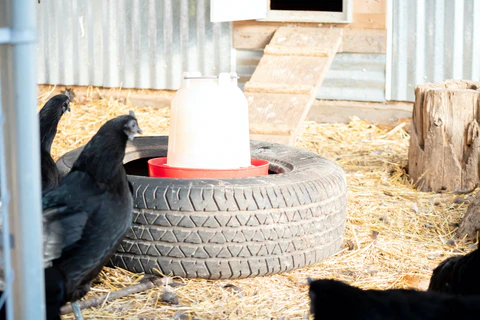
Use old tires to absorb the sun’s warmth and delay water freezing as long as possible. Their black color absorbs heat and holds it for a while, so you can put a bowl filled with water inside. Remember that it is necessary to place the tire in a location exposed to the sun.
An old bucket inside an old tire – One of the variations is to put insulating material, like shavings or straw, inside the tire and a few wooden blocks over it. Then, place the old bucket on the top and let the chickens hop up on the tire to drink unfrozen water while protecting their feet from the snow.
Old black rubber or livestock feeds tub – Such a tub absorbs the heat from the sun, delaying water freezes for a while. It needs to be sizable enough to stay stable but not too much to prevent chickens from quick access to water.
Black water container – Use a black bowl to keep water drinkable as long as possible. Place it on a wooden surface for a prolonged effect.
Black plastic wrap – Make a mini house of black plastic by stapling it around a frame and placing a water bowl inside. Leave one side open to allow chickens free access.
The primary downside of these methods is their uselessness during gloomy, cloudy, and rainy days, plus tires take up much space.
8. Mini greenhouse
Build a mini greenhouse out of plexiglass or clear construction plastic. Staple a chosen transparent material onto a frame and put a bowl with water under this improvised mini greenhouse box. Put it in a sunny spot and leave one side open as an entrance.
9. Windowpane tent
Set up old clean window panes to create a mini greenhouse over the bowl with water. Place them against each other, making a triangular tent, and secure the tops. This improvised construction creates a warm atmosphere below and keeps water from freezing.
10. Warm water into a warm drinker
Pour warm water into a heated water bowl and prolong the time before it gets frozen. Replace it with a new amount once or twice a day, depending on the outside temperature. Take care not to use boiled water to protect the chickens from burns.
11. Saltwater bottle
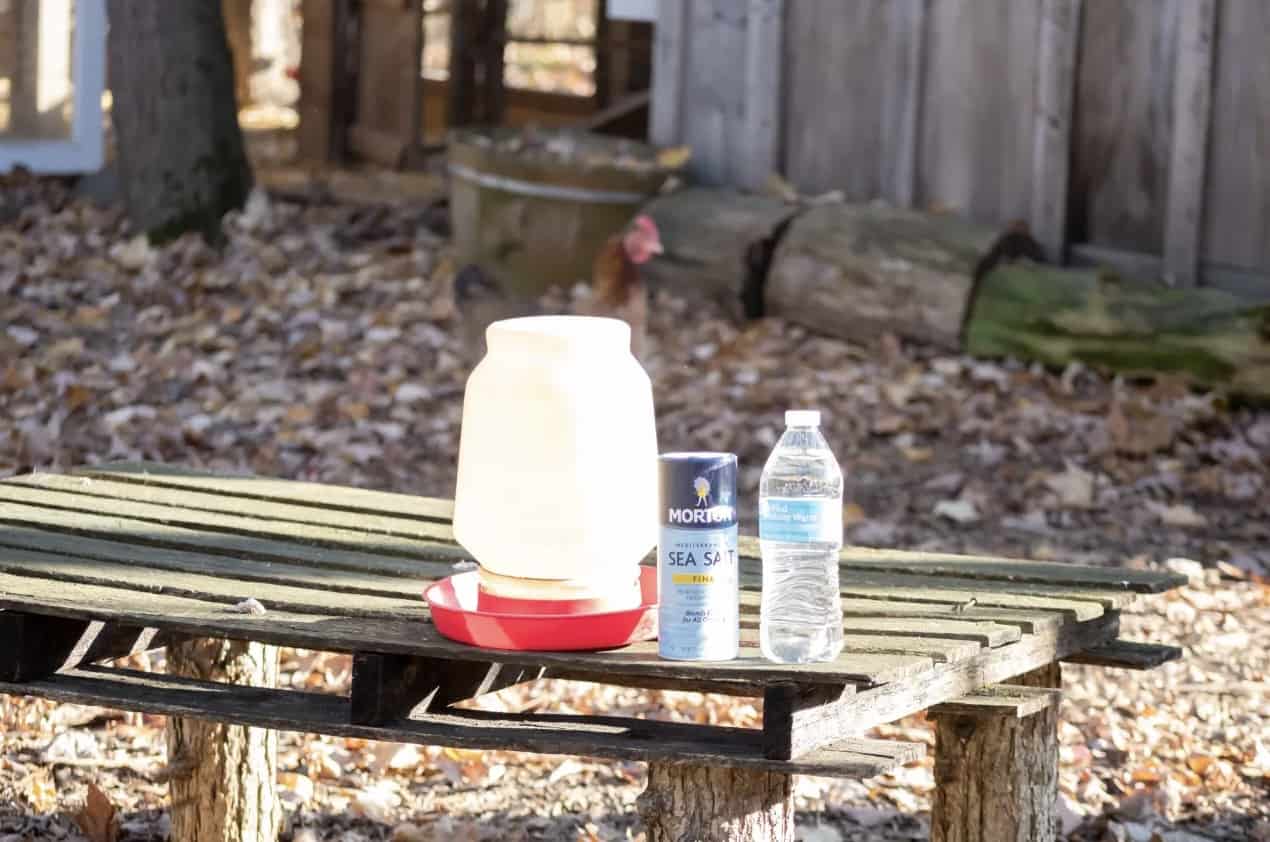
Place a bottle of salt water inside the bowl with drinking water to prevent its quick freezing. Make a solution by adding 0.3 cups of salt to a bottle filled with three cups of boiling water and screw a cap tightly.
The trick is in a lower freezing point of saltwater than freshwater, prolonging the freezing time. Be careful and never pour salt directly into drinking water to prevent killing your fowl.
12. Keep ducks with chickens
Keeping ducks with chickens is an excellent natural way to prevent water from freezing. This poultry type enjoys playing and swimming in the water throughout the day, regardless of the outside temperature.
That way, these birds make water freezing impossible but also make it dirt quickly. Additionally, you need a sizable container to make enough space for their activities.
13. Switch the waterers
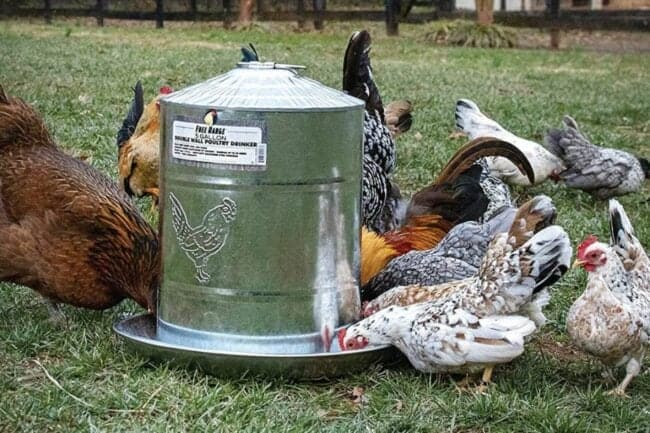
You need two water bowls to make this old trick efficient. Fill drinkers with water in the morning and replace them twice to three times a day. It is the most convenient way for farmers who spend time on the farm, but it is inapplicable if you are often away for several hours.
Remember that larger water surfaces prolong the time necessary for water to freeze. Even though too sizable containers are impractical for a chicken enclosure, they are an efficient and affordable solution during the winter.
14. Melt or break up ice
One of the methods is to break the ice formed on the water’s surface. Even though chickens can break through thin ice without your help, they are helpless when the ice layer is too thick. In such a situation, your support is crucial.
Melt the ice by adding boiling water or use a hammer to break it up. Then remove larger broken pieces to prevent quick re-freezing of the remaining water.
15. Glycerin
Since glycerin decreases the water freezing point, a few drops can slow its freezing. Unfortunately, this method is potentially dangerous since this compound can be poisonous in high quantities.
16. Apple cider vinegar
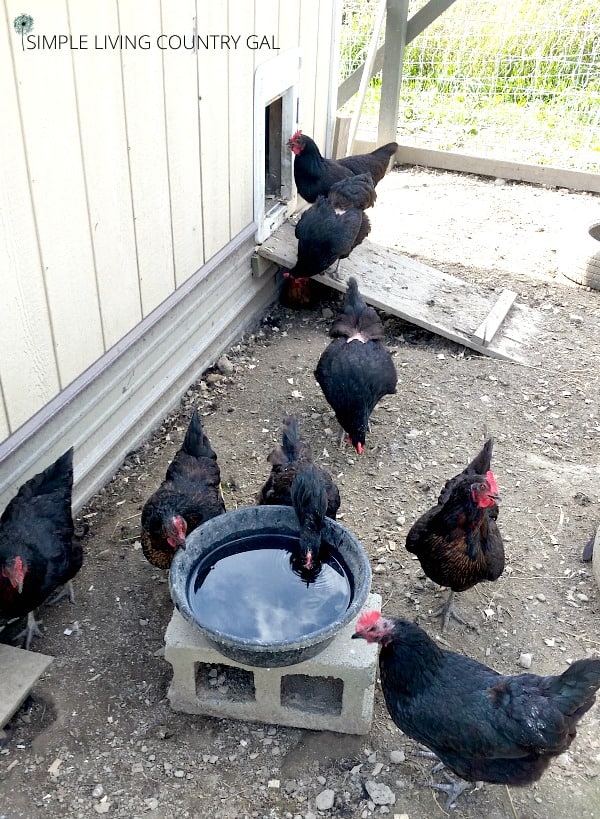
Unlike water getting frozen at 32 F (0 C), apple cider vinegar freezes at 28 F (-2.2 C). Therefore, adding a few drops to the drinker lowers the water freezing temperature by a few degrees. This method is ineffective in cold regions but can help when temperatures are not too low.
17. Install a drinker inside the ground
It is a creative way to keep chicken water safe from freezing, but it requires time and effort. It is necessary to dig a hole, place a fresh manure layer at the bottom, and partially bury the bucket of 5 gallons (19 l) in the ground.
Take care to leave its rim approximately 4 to 6 inches (10 – 15 cm) above the ground level. That allows you to quickly remove the bowl for cleaning and refilling it with fresh water. The downside of this method is that the water becomes dirty quicker than usual, requiring additional maintenance.
Summary
As you can see, there are numerous ways to keep chickens’ water from freezing. The chosen method typically depends on the flock size and outside temperatures. You can use electricity, try one of the proven options, or test your creativity with DIY solutions. In any case, the goal is to keep your poultry hydrated despite the cold weather.

